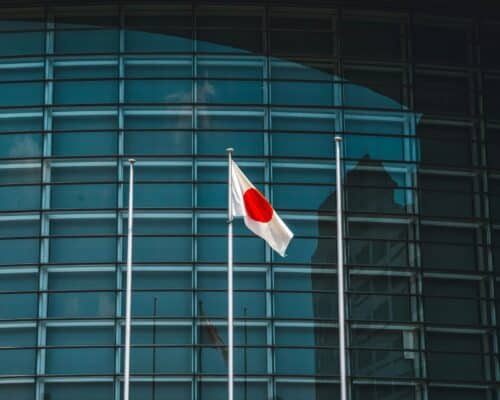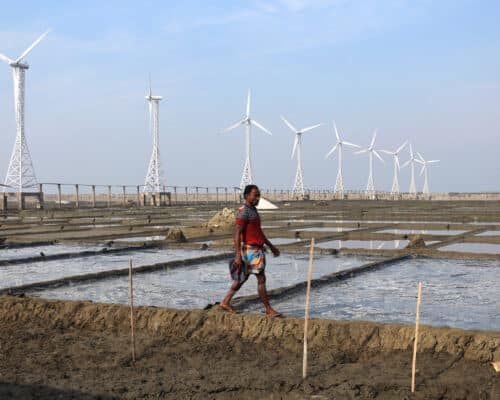Wind Energy in Japan: Prospects, Benefits and Future
12 June 2024 – by Viktor Tachev
Thanks to its vast wind energy potential, Japan is poised to move towards a future without dependence on coal, oil, gas, or uranium imports. In addition to energy independence, harnessing wind energy in Japan would ensure cheaper energy and accelerated decarbonisation.
Wind Energy in Japan 2024 – Prospects
The Global Wind Workforce Outlook 2022-2026 report by the Global Wind Organisation (GWO) and the Global Wind Energy Council (GWEC) concludes that global offshore and onshore wind power capacity will jump from 837 GW in 2022 to 1,394 GW in 2026. As a result, the world would need 449,800 newly trained wind power technicians in the wind industry. Around 86% of them would be required in nine countries, including Japan.
Japan’s Onshore and Offshore Wind Power Capacity
The GWEC and GWO note that Japan has installed 4.5 GW of onshore and 52 MW of offshore wind power capacity. The country plans to add 3.5 GW of onshore and close to 1 GW of offshore wind energy by 2026.
Japan Wind Energy Potential
The World Bank estimates Japan’s geography has a technical potential for nearly 550 GW of offshore wind. The GWEC sees potential for around 128 GW of capacity for fixed bottom wind projects in shallow waters and 424 GW for floating offshore wind turbines in deeper waters. Zero Carbon Analytics shows Japan’s total technical potential for offshore wind power generation is over 9,000 TWh/year. This is over nine times its projected electricity demand in 2050. Studies estimate that Japan has 14 times more solar and offshore wind resources than needed to supply 100% renewable electricity. The country’s exclusive economic zone has an offshore wind potential for 50 times more electricity than its current electricity consumption.
The Japan Wind Power Association (JWPA) acknowledges the country’s immense potential. It has set the ambitious goal of increasing capacity to 140 GW by 2050 from just 5 GW today. Of this, 40 GW will be onshore, with 40 GW of bottom-fixed and 60 GW of floating offshore capacity. As a result, wind power is expected to meet around a third of Japan’s electricity demand.
Yet, the government’s plans are less ambitious. Through auction programs, it plans to stimulate the addition of 10 GW by 2030 and 30-45 GW by 2040.
Wind Power in Japan – Expectations
The massive wind energy potential gives Japan a powerful solution to all the issues associated with fossil fuel technologies, including high power costs, energy dependence, high emissions and stranded asset risk.
For example, the JWPA estimates that if its target materialises, Japan’s new wind power installations and offshore wind farms will create immense economic gains of around USD 44.4 billion annually in 2050. The country can expect to create 355,000 jobs and slash annual fossil fuel costs by around USD 16.7 billion per year.
Cheaper Energy
According to GWEC’s Global Wind Report 2023, wind energy technologies have significantly reduced their cost over the past 20 years. Alongside solar energy, they are among the cheapest forms of electricity globally.
TransitionZero estimates that by 2030, onshore wind power in Japan will be cheaper than all coal options, even unabated. Even floating offshore wind energy in Japan, the most complex and expensive wind technology, will be cheaper or level with the most competitive coal power alternatives.
By 2030, building new offshore wind capacity will cost less to build than new nuclear power or coal with carbon capture and storage.
Ensuring Energy Independence
Prioritising renewable energy can help ease Japan’s massive import dependence problem, highlighted by the energy independence score of just 13.8%. Currently, the country relies on imports for 90% of its energy needs. It is also the world’s biggest LNG importer.
Experts estimate that a 1 GW offshore wind farm could replace the 0.8 billion cubic meters of gas needed to generate the same amount of electricity. In 2022 alone, just a 1-GW wind farm would have avoided USD 928 million in imported gas costs.
On top of that, a switch from coal and gas to wind power and other renewables would also help address the problem of the billions locked in stranded fossil fuel infrastructure.
Accelerated Decarbonisation and Improved Reputation
According to Climate Action Tracker, despite Japan’s unambitious climate targets, the country is still not likely to meet them. The organisation even warns that if all countries followed Japan’s approach, warming would reach up to 3°C.
Pursuing wind energy at scale would significantly boost Japan’s decarbonisation journey and help it refute the “climate laggard” accusations. Estimates reveal that even just an 18% share of offshore wind in the total energy mix by 2035 would put the country on track for a 90% decarbonised power sector.
The Government’s Role: More Ambitious Targets and Enabling Policy Measures
The GWEC notes that Japan has adequate targets and policies for the initial deployment of offshore wind projects. However, experts warn that the country lacks robust policy infrastructure and predictable project pipelines for a mass scale-up.
Focus areas for improvement include addressing lengthy Environmental Impact Assessment (EIA) timelines, streamlining grid connection processes, making bidding rules clearer to ease project developers, ensuring on-schedule procurement and completion and supporting the offshore wind industry. The JWPA calls for increased collaboration between the public and private sectors. Meanwhile, the GWR advocates for a shift towards a centralised bidding system to help improve the efficiency of wind surveying, resource measurements and grid access.
Introducing competitive carbon pricing mechanisms is another crucial step for encouraging wind power investments. Carbon taxing in Japan currently faces very strong opposition, which is why the rates remain among the lowest globally.
The IEA warns that successful deployment of offshore wind relies on developing onshore grid capacity. In that sense, a failure to upgrade or expand the onshore network could mean that a significant amount of Japan’s offshore wind potential remains unused.
Furthermore, the average offshore wind farm construction times have fallen to just 18 months. Alongside the decreasing costs, Japan has all the prerequisites to accelerate wind power development. Among the most essential steps to do that is developing long-term targets that are more ambitious than the existing ones. The Japanese government’s 45-GW offshore wind power target in 2040 is way below the JWPA’s (140 GW by 2050). The latter urges for increasing the national target to at least 100 GW by 2050. Mapping out a clear sector roadmap will also help attract foreign investors and companies interested in developing local supply chains. Localisation of parts of the supply chain is something that the Japanese government has identified as a key priority.
With that said, the question is, is the government willing to do what it takes to turn the country of the rising sun into one powered by boundless wind?
This article is available in Japanese language on Energy Tracker Japan.
by Viktor Tachev
Viktor has years of experience in financial markets and energy finance, working as a marketing consultant and content creator for leading institutions, NGOs, and tech startups. He is a regular contributor to knowledge hubs and magazines, tackling the latest trends in sustainability and green energy.
Read more







